#Himalayan region of Nepal
Text
#Nepal trekking#Solo trekking#Trekking regulations#Remote regions#Himalayan trekking#Nepal tourism#Safety regulations#Trekking permits#Travel restrictions#Adventure tourism#Trekking guides#Solo travel#Outdoor adventure#Annapurna circuit#Everest base camp#Langtang trek#Manaslu trek#Mustang trek#your spiritual journey
2 notes
·
View notes
Text



One Himalaya is a UK based online travel company, specialising in the stunning Himalayan regions of Nepal, India, Tibet and Bhutan. We offer tailor made luxury and adventure travel including classic and off the beaten track treks, cultural tours, wildlife safaris and expeditions, river cruises, luxury train tours, birdwatching, special occasions including honeymoon, anniversary and other celebrations, corporate development and special interest itineraries. Bookings made with us are 100% financially secure and ATOL protected. Contact us for a bespoke itinerary and Himalayan adventure designed just for you.
#Himalaya travel#one- himalaya#one himalaya Himalayan region#Nepal trekking#India Himalaya tours#Bhutan cultural tours#Tibet travel adventures#Himalayan wildlife safaris#Houseboat cruises#Tropical beaches Himalaya#High Himalayan peaks#Lush valleys Himalaya#Arid deserts Himalaya#Dense jungles Himalaya#High plains Himalaya#Himalayan spa experiences#Train journeys Himalaya#Himalayan adventures#Trekking in Himalayas#Cultural experiences Himalaya#Unique Himalayan experiences
0 notes
Text
Island Peak: A Test of Willpower for Experienced Climbers
Island Peak (6,189 meters), also known as Imja Tse, offers a demanding and rewarding climb in Nepal's Khumbu region, neighboring the mighty Everest. This pyramid-shaped peak attracts experienced climbers seeking a challenging ascent amidst breathtaking Himalayan scenery. The climb tests technical skills, physical fitness, and the ability to handle the unforgiving conditions of high altitudes.

Gateway to Adventure
The expedition typically begins in Kathmandu, Nepal's capital city. Here, climbers finalize logistics, assemble specialized gear for extreme conditions, and undergo crucial training to prepare their bodies for the thin air encountered at high altitude. Transportation then takes them to a starting point like Lukla, the gateway to Everest. The trek to Island Peak Base Camp (around 5,030 meters) commences, offering stunning views of surrounding peaks like Lhotse (8,516 meters) and Ama Dablam (6,812 meters).
Acclimatization and Technical Training
The initial stages involve trekking through the Khumbu Valley, a region adorned with traditional villages, prayer flags, and dramatic mountain vistas. This period is crucial for acclimatization, allowing climbers to gradually adjust to the increasing altitude while enjoying the rich culture of the region. Villages like Namche Bazaar and Tengboche offer rest stops and a chance to interact with the local people. As the trek progresses, the focus shifts towards technical aspects of the climb. Establishing Base Camp marks the beginning of technical training, with practice sessions on fixed ropes and crevasse rescue techniques.
The Ascents: A Blend of Skill and Grit
The climb from Base Camp involves traversing glaciers with crevasses and navigating the challenging Lhotse face. Establishing camps at progressively higher altitudes (Camp 1 around 5,600 meters and Camp 2 around 5,800 meters) tests climbers' stamina and ability to function in thin air. The final summit push requires excellent route-finding skills, surefootedness on scree slopes, and the ability to handle fixed ropes and potentially ladders for specific sections. Reaching the summit rewards climbers with breathtaking panoramic views of the Everest region before beginning the technical descent.
A Return to Base Camp and Beyond
The descent requires careful navigation and focus due to fatigue and potential weather changes. Reaching Base Camp signifies a successful summit and a return to a more breathable environment. The trek back to Lukla and eventually Kathmandu allows climbers to reflect on their accomplishment and celebrate conquering a technically demanding peak.
A Climber's Badge of Honor
Island Peak Climbing is a prestigious feat for experienced mountaineers. While less crowded than Everest, it demands a unique blend of technical skills, exceptional physical fitness, and the ability to make sound decisions in a challenging environment. For those who reach the summit, the experience becomes a testament to their climbing abilities and a badge of honor in the record books of this captivating peak.
#Island Peak Climbing#Peak Climbing in Nepal#Imja Tse Climbing#Khumbu Region#Himalayan Adventure#Peak Climbing Expedition#Pyramid-Shaped Peak
0 notes
Text

Surya, the Sun God
early 700s, Kashmir
Surya wears a long tunic and boots suitable for riding horses across the grassland steppes of Central Asia. The sun god was of paramount power among the people of Central and Western Asia who followed religions such as Zoroastrianism, a pre-Islamic faith emphasizing a sacred duality between light and dark. When the image of the sun god began to be made in India from the 100s BC on, he is shown in the dress of the people who revered him the most. Surya is worshipped throughout the Indian subcontinent and Himalayan regions of Kashmir and Nepal alongside both Hindu and Buddhist deities.
52 notes
·
View notes
Photo

Legends and myths about trees
Trees in Buddhism (3)
Sal tree (Shorea robusta) – the Nirvana
In Buddhism, there is an important day called 'Sanbutsuki (3 anniversaries of the Buddha)', which commemorates three major milestones in the Buddha's life.
These are Buddhist rituals of the Nativity on 8 April, when Buddha was born, the Jodo-e (becoming a Buddha) on 8 December, when he attained enlightenment, and the Nirvana on 15 February, when he passed away.
The Buddha's death is believed to have occurred on 15 February of the lunisolar calendar in China and Japan, and in many places it is now held on 15 March.
According to Buddhist tradition, the Buddha was lying between a pair of sal trees when he died:
Then the Blessed One with a large community of monks went to the far shore of the Hiraññavati River and headed for Upavattana, the Mallans' sal-grove near Kusinara. On arrival, he said to Ananda (Ref1), the chosen disciple, "Ananda, please prepare a bed for me between the twin sal-trees, with its head to the north. I am tired, and will lie down. (DN16; Nirvana Sutra)"
When the Buddha died in Kusinara, there were 4 or 8 sal trees on the 4 corners of his bed. They were said to have bloomed at the same time, then quickly withered and turned white, just like a flock of cranes.
In Buddhism, the brief flowering of the sal tree is used as a symbol of impermanence and the rapid passing of glory. The sal tree is also said to have been the tree under which Kondana and Vessabhu, respectively the fifth and twenty fourth Buddhas preceding Gautama Buddha, attained enlightenment.
The sal tree (shorea robusta, sāla, shala, sakhua, or sarai), is a species of tree in the family Dipterocarpaceae. The tree is native to India, Bangladesh, Nepal, Tibet and across the Himalayan regions.
The sal tree is mythologically classified as a 'tree of life', symbolising resurrection, rebirth and rejuvenation, but in Buddhism it is one of the three most sacred trees, symbolising parinirvana, as the Buddha died under two sal trees in a row.
The three most sacred Buddhist trees are:
Ashoka tree: the tree where the Buddha was born (Ref).
Bodhi tree: the tree where the Buddha attained enlightenment
Sal tree: the tree where the Buddha died.
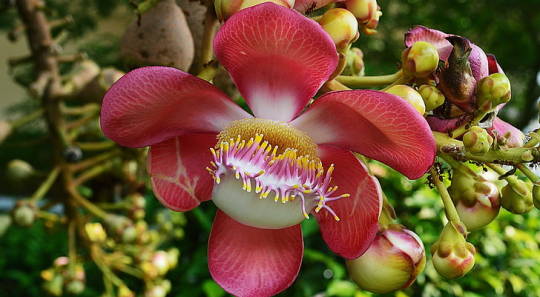
木にまつわる伝説・神話
仏教の樹木 (2)
沙羅双樹 (サラソウジュ) 〜涅槃会 (ねはんえ)
仏教には、ゴータマ・ブッダの生涯における3つの大きな節目を記念する「三仏忌 (さんぶつき)」という大切な日がある。
それが、ブッダが生まれた4月8日の降誕会 (こうたんえ)、悟りを開いた12月8日の成道会(じょうどうえ)、そして入滅した2月15日の「涅槃会(ねはんえ)」。
ブッダの入滅は中国や日本では旧暦2月15日とされ、現在は3月15日に行なわれているところが少なくない。
また、仏教の伝統によると、ブッダは入滅したとき、一対の沙羅双樹 (サラソウジュ) の間に横たわっていた。
その後、大勢の僧侶たちの中から選ばれたアーナンダ(参照1)はヒラニャーヴァティ川の向こう岸に行き、クシナラ近くのマッラ族の沙羅樹の林、ウパヴァッタナへ向かった。到着すると、ブッダはアーナンダに言った。「アーナンダ、2対の沙羅双樹 (サラソウジュ) の間に、頭を北に向けた寝床を用意してください。私は疲れているので、横になります。(DN16; 大般涅槃経)」
ブッダがクシナガラで死去したとき、臥床の四辺に4双8本の沙羅双樹 (サラソウジュ)があった。時じくの花を咲かせ、たちまちに枯れ、白色に変じ、さながら鶴の群れのごとくであったという。
仏教では、沙羅双樹 (サラソウジュ)の木の短い花は、無常と栄光の急速な通過の象徴として使用されることもある。また、沙羅双樹 (サラソウジュ) は、ゴータマ・ブッダに先立つ5番目の仏陀であるコーナニャーと24番目の仏陀であるヴェッサブーが悟りを開いた木であると言われている。
沙羅双樹 (サラソウジュ)はフタバガキ科の樹木の一種で、インド、バングラデシュ、ネパール、チベット、ヒマラヤ地方に自生している。
沙羅双樹 (サラソウジュ)は神話学的には復活・再生・若返りの象徴である「生命の木」に分類されるが、仏教では二本並んだ沙羅の木の下で釈尊が入滅したことから般涅槃の象徴とされ、仏教三大聖樹のひとつである:
無憂樹: 釈迦が生まれた所にあった樹木(参照)
印度菩提樹:釈迦が悟りを開いた所にあった樹木
娑羅双樹:釈迦が亡くなった所にあった樹木
#trees#tree legend#tree myth#trees in buddhism#sal tree#buddha#nirvana#ananda#buddhist rituals#philosophy#nature#art#sacred trees
168 notes
·
View notes
Text

Red coral kukri
The red coral kukri (Oligodon kheriensis) is endemic to a small region of the Himalayan tracts of northern India and Nepal.
Image courtesy of Shahidul Islam.

#shahidul islam#photographer#bangladesh#red coral kukri#snake#reptile#oligodon kheriensis#himalayas#nepal#india#nature
48 notes
·
View notes
Text
Here's your incredible friendship story of the day:
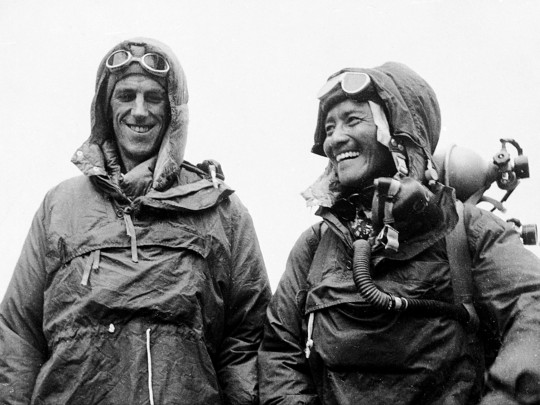
In 1953, Edmund Hillary and Tenzing Norgay became the first two people to ever summit the highest mountain in the world, Mount Everest. Before the commercialised hiking expeditions of the 21st century, Hillary and Norgay had to make the climb without a pre-fixed route, discovering their own path to the top (one of which later became known as the Hillary Step in the Everest climbing trail).

The pair did not know each other well beforehand but met through their mountaneering peers. Norgay (a sherpa, Himalayan locals well-known for their mountaneering prowess) apparently made a lasting first impression on Hillary due to his incredible mountaneering skills, patience, complete with his "flashing, irresistible smile".
In one ocassion during their few earlier expeditions together, Hillary stepped on a crumbling ice and almost fell to his death before Norgay saved his life. This made him determined to ask Norgay to be his partner for his Everest Summit expedition.
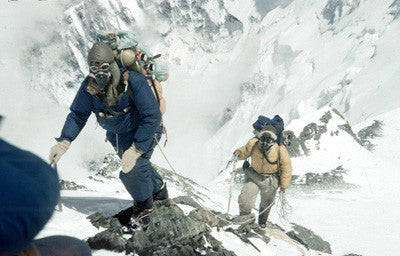
Amongst other members of the expedition, their pairing became the first one who were successful, reaching the highest point on Earth at 11:30 a.m. on May 29, 1953.
At the top, Hillary hilarously recalled extending his hand to shake Tenzing's hand in "a good Anglo-Saxon fashion," but his Nepalese-Indian friend jumped him on the back and gave him a massive hug instead. As he said, it was the “great moment for which I had waited all my life, [...] I waved my arms in the air and then threw them around Hillary, and we thumped each other on the back until, even with the oxygen, we were almost breathless!”.
But beyond this monumental achievement, the gentlemen's agreement they made at the top was perhaps an equally impressive commitment.

Being the only people in the world who were present, Norgay and Hillary made a promise to present their a success as a joint effort. Both countrymen were under international pressure to divulge who was actually the first to step foot on the summit. Despite the rising colonial tension at the times, both Norgay and Hillary refused to say anything other than they reached the summit together as a team, carrying the secret to their deathbeds.
After Everest, Hillary devoted his life to assisting the overlooked sherpa people of Nepal. He established the Himalayan Trust, constructing many schools and hospitals in Nepal. Norgay continued to climb mountains all over the world for the rest of his life and died in his beloved Himalayas.
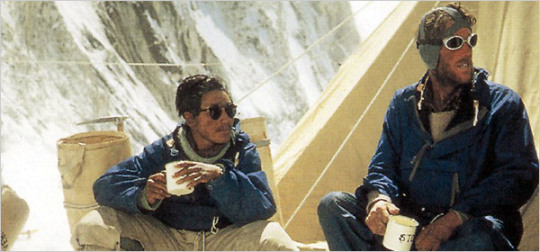
Hillary and Norgay remained lifelong friends, bonded for life. When Tenzing Norgay died in India in 1986, the country was in a massive political turmoil and all the streets in Darjeeling were closed due to confrontations with Nepalese separatists.
Edmund Hillary was the only foreigner allowed to enter the region, as reporters recounted how protesters parted ways to enable him to pay respects to his old friend.
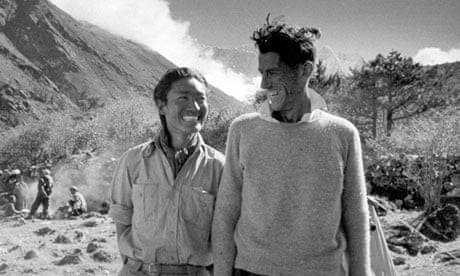
In 2003, their sons Peter Hillary and Jamling Norgay climbed Everest together, celebrating the 50th anniversary of their fathers' memorable climb that changed the world forever.

#friendships that transcended lifetimes#friendships that changed the world#this one quite literally!#them on top of everest tho 🥺#let's have a decent handshake lad- Nope let me give you a massive hug!!#i'm a sucker for incredible friendships#everest#climbing#tenzing norgay#edmund hillary#mountaneering#nepal#new zealand#tibet#india#himalayas
190 notes
·
View notes
Text
Come autumn, Nepal will deploy heavy lifter drones to transport garbage from the 6,812-metre tall Ama Dablam, south of Everest. This will be the first commercial work an unmanned aerial vehicle does in Nepal’s high-altitude zone.
The heavy lifter from China’s biggest drone maker, Da Jiang Innovations (DJI), will take on tasks traditionally handled by Sherpas. Officials believe it will help reduce casualties on Everest.
Then, in spring (March-May), DJI drones, which make sounds similar to a swarm of bees, will be put to work on Everest.
It will fly to Camp I (5,943 metres) to supply ropes and ladders to prepare routes and bring garbage to the Everest base camp at 5,364 metres.
On Sunday, a tripartite memorandum of understanding (MoU) was signed between the Sagarmatha Pollution Control Committee, the Khumbu Pasang Lhamu Rural Municipality, and the Airlift Technology Pvt Ltd for the use of advanced drone technology to efficiently manage garbage in the mountains of the Khumbu region.
In April, Chinese drone maker DJI conducted the world’s first drone delivery test on Everest.
“After a successful test in April, we plan to use drones commercially in the Everest region,” said Jagat Bhusal, chief administration officer of the rural municipality that hosts Everest.
The test result showed that the DJI FlyCart 30, the long-distance heavy lifter drone, could airlift 234 kg per hour between Camp I and Base Camp, a task usually accomplished by at least 14 porters in six hours.
Drone manufacturer DJI is under the microscope as US lawmakers push for a ban on Chinese drones, amid deteriorating relations between the US and China, the world’s largest trading nations.
Nepali officials and mountaineers, however, see the drone as a life-saving vehicle.
Traditionally, local Sherpa guides are responsible for transporting supplies and clearing trash on Everest. They may need to cross the icefall over 30 times a season to transport supplies such as oxygen bottles, gas canisters, tents, food, and ropes.
All climbers and guides must navigate the icefall on the route to the world’s tallest peak. The icefall is so notoriously dangerous that even experienced Sherpas hesitate to move when the sun shines.
The Khumbu Icefall, a river of ice a kilometre or so long, is usually crossed at night or early morning, with climbers putting headlamps on their helmets.
Normally, the route is crossed early in the morning, when the ice blocks and the hanging glaciers are stable and avalanche risks are low.
During the day, as the sun warms the mountain, the hanging glaciers melt, and ice crumbles, increasing the risk of avalanche.
“Using drones will help us avoid the dangers in the Khumbu Icefall,” said Bhusal.
On April 18, 2014, an avalanche resulting from a falling serac buried 16 Sherpa guides in the Khumbu Icefall, eventually leading to the cancellation of the season’s expeditions.
Last year, three Sherpa guides mobilised to prepare the routes were buried under the ice masses triggered by an avalanche in the Khumbu Icefall. Their bodies are yet to be recovered.
The Himalayan Database and the government records show that nearly 50 individuals died on the icefall between 1953 and 2023.
The climb from Everest Base Camp to Camp I takes six hours. Between these two camps lies the Khumbu Icefall, the most treacherous part of the route.
The most exciting and easiest part of the route is reaching Camp II (6,400 metres), which takes four hours from Camp I.
There is a set of restrictions in the mountains for carrying loads.
According to government rules, workers climbing high altitudes must not carry loads exceeding 20kg between 5,000 and 6,000 metres, 17 kg between 6,001 and 7,000 metres, 14 kg between 7,001 to 8,000 metres, and 12 kg for altitudes above 8,000 metres.
“Yes, there are concerns that the machines may actually cut jobs. But our sole purpose is to reduce potential deaths in the Khumbu Icefall, the danger zone,” said Bhusal.
“We will train Sherpas, as drone operators cannot handle tasks at the higher camps. In the future, all work will be done by Sherpas.”
In the trial phase, the drone could lift 30 kg from Camp I. However, its performance dropped to 18 kg from Camp II.
“Based on the MoU framework, we will soon sign a commercial agreement with the drone supplier,” said Bhusal. “The municipality will monitor all the activities.”
The municipality has, so far, spent Rs800,000 on the trial.
Climate change is melting snow and ice, exposing even more garbage and bodies that have been covered for decades on Everest. This waste pollutes the natural environment and poses a severe health risk to everyone who lives in the Everest watershed.
Nearly 100 tonnes of garbage were collected during this spring climbing season from Everest and Lhotse, which share the same base camp.
According to the Sagarmatha Pollution Control Committee (SPCC), 77.19 tonnes of waste was collected from the Everest base camp alone during the Spring 2024 climbing season. With 8-9 tonnes coming from the higher camps brought down by the expedition agencies, the SPCC collected 85 tonnes of waste this spring.
The breakdown of collected waste shows burnable garbage at 27.99 tonnes, recyclable garbage at 7.51 tonnes, human waste at 27.53 tonnes, and kitchen waste at 14.15 tonnes. The Nepal Army also collected over 11 tonnes of garbage.
#mount everest#trash removal#pollution#good news#science#environmentalism#nepal#environment#mountaineering#mountain climbing#climate change#climate crisis#global climate change#china#drones#unmanned drones#sherpas
9 notes
·
View notes
Text
Kabru's name
(I’ll provide some links in a reply, so Tumblr doesn’t eat this)
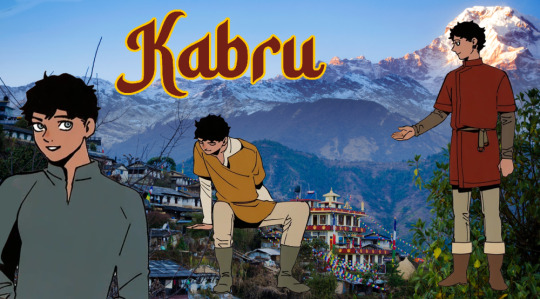
(UPDATE: Full version of this research is available here!)
Fun Dungeon Meshi facts! Kabru’s name is also the name of one of the peaks of the Himalayan mountain chain. It’s on the border between India and Nepal, which fits with Kabru’s skin and hair color (and texture). Also a lot of clothes and color choices Kui makes in the Daydream hour supplements really give me a Nepalese vibe, especially that red tunic. Lighter colored eyes are also not unheard of in that region, though obviously blue is still rare.
Utaya is also the name of a real place! It’s a small village (population of 98 people) at the foot of a mountain in the sub-arctic region in north-eastern Russia, and the name ‘Utaya’ is from the Yakut language, which has Turkic origins. Utaya also means ‘mandible’ in Swahili, and possibly is a name that means ‘Always bright’ in Hindi? Can’t confirm those last two.
Anyway all that to say that I HC Utaya having a culture influenced by Nepal and India, and I HC Kabru’s mom being named Annapurna, which is another mountain in the Himalayan range, named after the goddess of food - what could be more fitting for Dungeon Meshi, right?
I also HC Kabru having a big dick cuz he’s named after a mountain and quite popular with the ladies but that’s really not that important i just think it’s funny
Some pics of Nepalese and Indian men that reminded me of Kabru under the cut, along with some more general pictures of the people of Nepal. Enjoy and do what you will with the fruits of my research!
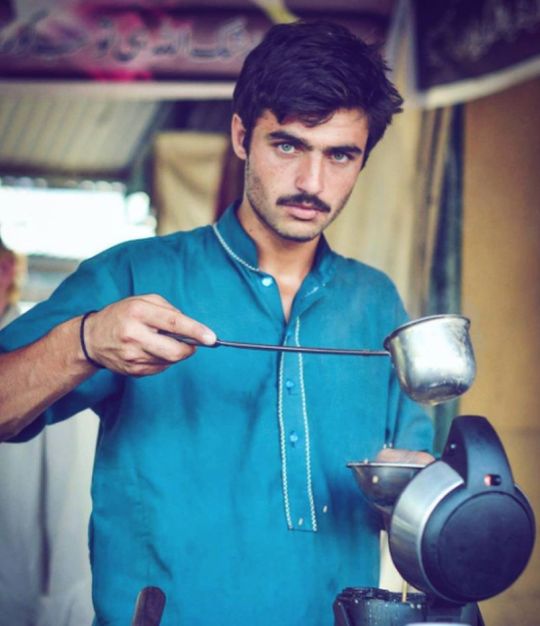
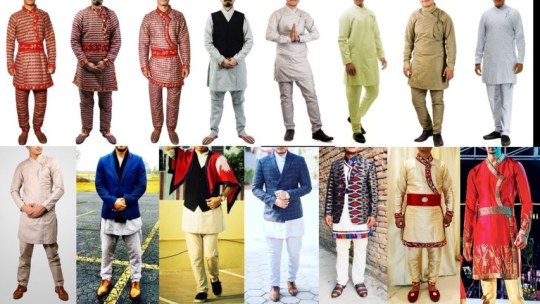

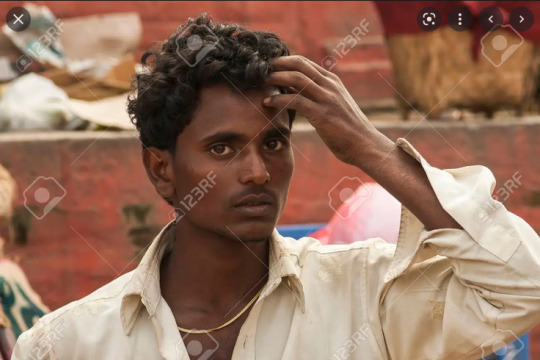
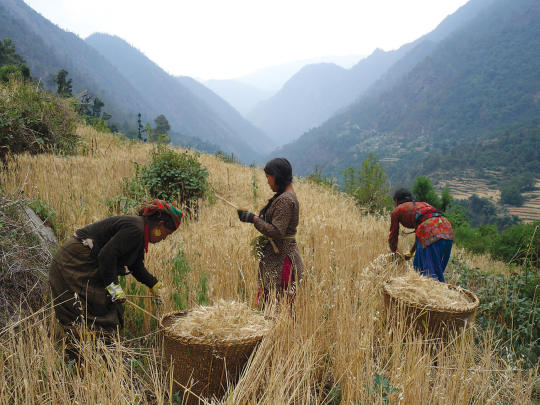

#dungeon meshi#delicious in dungeon#kabru#dunmeshi#ダンジョン飯#headcanons#my stuff#Dungeon Meshi Research
218 notes
·
View notes
Text

https://www.reuters.com/investigates/special-report/usa-covid-propaganda/
9 notes
·
View notes
Note
Hey not a question but your pfp looks like the traditional dress of women of Himalayan region from Nepal it's so similar 😍
Yes!! I've always noticed nepali dress from himalaya region is super similar to the traditional tibetan dress! If I'm not completely mistaken I think it's because many tibetans fled to Nepal back then and the cultures mixed a little, no? Either way, both cultures are amazing~
I love this picture of a Nepali woman. Ever since I found it I can't forget it. उनी धेरै सुन्दर छिन्।

14 notes
·
View notes
Text
Australian Pokemon: non-natives
For this set of my fakemon set in the Goorda region, based on a combination of Australia and Aotearoa/New Zealand, I focused on non-native species. Both countries have a lot of introduced and invasive species to draw on for ideas. I previously made a regional Buneary and Lopunny based on invasive rabbits. Previous posts: regional standards, creepy lines, regional variants, birds, early-game standards, misc, misc, starter variants, starters.

First up is Sprigorse, the Long-Beard Pokemon, fairy/grass type. These Pokemon were introduced from a different region and have become an invasive species. Their bodies are made of wood and they wear crowns of flowers and long beards made of branches and leaves. Both the flowers and beards will spread seeds, growing foreign plants that outcompete natives. Sprigorse live in colonies in the forest and are led by the member with the longest beard. They are known to prank and attack travelers through the forest.
Sprigorse is based on two plants that are invasive in NZ: old man's beard and gorse. Both were brought in from Europe and are now outcompeting the native plants. Like the plants, Sprigorse is foreign import. I based it on a spriggan, a mythical creature from England, where both old man's beard and gorse are native. Spriggans were usually depicted as wisened old men and were said to inhabit wild places and were often malicious. Srigorse's name comes from "spriggan" and "gorse"
Next up is Tahrkid, the Ice Horn Pokemon, ice-type. Tahrkid's horns are made of ice and regrow stronger when broken, so they repeatedly smash their horns to strengthen them. They are highly dextrous and can leap between peaks and climb nearly vertical surfaces. Tahrkid was first introduced to Goorda from a region far away.
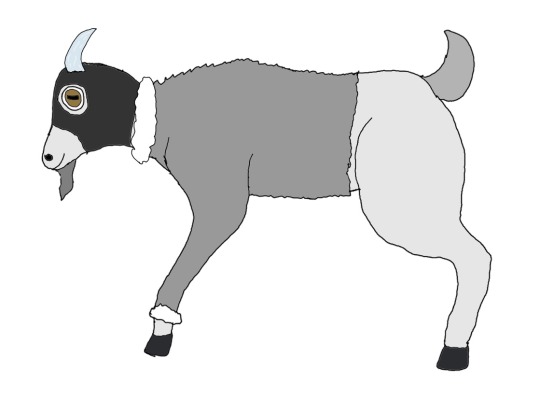
Tahrkid evolves to Yodhatahr, the Ice Horn Pokemon, ice/fighting type. Their horns are made from nearly indestructible ice, allowing them to pulverize boulders with a single headbutt. When two fight, the slam their horns together until one's horns break or it submits.

Tahrkid and Yodhatahr are based on a combination of mountain goats and the Himalayan tahr, a species of wild goat found in the Himalayas. Yodhatahr also has ram horns and Tahrkid appears to be wearing a coat and ski mask. Tahrs are an invasive species in NZ, where they can outcompete local herbivores in the mountains. The line's ability to climb nearly vertical surfaces is something real goats do and real goats also headbutt when fighting. Tahrkid's name comes from "tahr" and "kid" (juvenile goat) while Yodhatahr's name comes from "tahr" and "Yōd'dhā", the Nepalese word for "warrior". Presumably this line would originate from the Pokemon world's Himalayas and would therefore be known in the Pokemon version of Nepal.
The final line for this post starts with Dimpole, the Ball Pokemon, poison-type. Dimpole were introduced to Goorda from another region and have become an invasive species. They bounce and roll on their spherical bodies in such numbers that they coat the land during breeding season, causing a trip hazard for humans. They enjoy bouncing and being sent flying, so humans will hit them with sticks and golf clubs to get them out of the way.

Dimpole evolves to Foretitoad, the Toad Pokemon, poison-type. Foretitoad are an invasive species in Goorda. They leak toxins wherever they go, allowing them to reduce fertile fields to bare ground, while also making them too toxic for predators to eat. Females have spikes on their backs that they use to carry their eggs. When the young hatch, they use their paddle-shaped tails to send the young flying into new habitats.
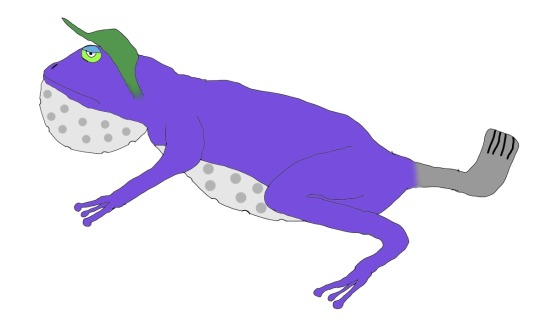
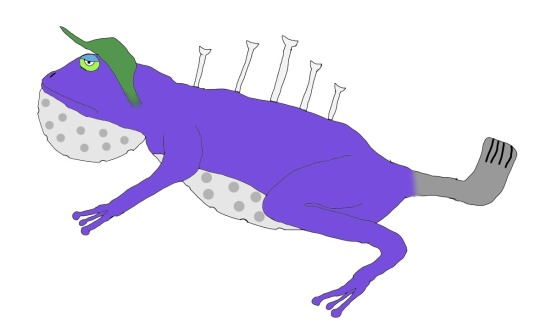
(Male on left and female on right)
The Dimpole line are based on cane toads and toad golf. Cane toads may be the most notorious invasive species in Australia. Because of how many there are, people have invented various ways to kill them, the most infamous being toad golf: hitting them with gold clubsPart of the reason cane toads are so invasive is because they're too poisonous for most native species to eat. Dimpole is tadpole merged with a golf ball while Foretitoad is a toad with a golf ball belly and throat bouch, gold visor shaped head crest, golf club shaped tail. and the females have spines shaped like golf tees. Also their eyes look like the logo of Golf Australia. Golf is also not originally from Australia and, like cane toads, is terrible for the environment. Dimpole come from "dimple" and "tadpole" while Foretitoad comes from "fore", "fortitude", and "toad". @reikomania helped me come up with the design for this line.
#pokemon#fakemon#original pokemon#australia#new zealand#aotearoa#gorse#old man's beard#spriggan#mountain goats#himalayan tahr#tahr#cane toad#tadpole#golf#golf ball#art#new artist#artists on tumblr#drawing#digital art
10 notes
·
View notes
Text

The Himalayan cutia is a bird species in the family Leiothrichidae. Its scientific name ultimately means "the khutya from Nepal", as Cutia is derived from the Nepali name for these birds, and nipalensis is Latin for "from Nepal". This species inhabits the
Himalayan region, from India to northern
Thailand. Wikipedia >
52 notes
·
View notes
Text

The Annapurna region in Nepal is a top destination for trekkers, offering stunning mountain views and diverse landscapes. The Annapurna Circuit and Annapurna Base Camp (ABC) treks are the most popular. The Circuit trek is longer and takes you through varied terrain, while the ABC trek is shorter, leading directly to the base camp of Annapurna I. Both treks provide incredible Himalayan scenery and a rich cultural experience.
#hiking#trekking#sabbatical#himalayas#careerbreak#adventuretrip#adventuretravel#cultural tourism#socialtourism#nepaltour
3 notes
·
View notes
Text
History And Origin of Nepal: A journey through time
Lying right in the middle of the Himalayas between India and China, Nepal is a country that is full of a whole of history. The story it tells is of myths, legends, dynasties, and influences that flowed on the waves of both the Indian subcontinent and the Tibetan plateau. The origin of Nepal seems to be completely intertwined with geographical elements, religion, and cultural heritage. In this blog, one is introduced to the historical journey of Nepal and formation of Himalayas, from its root to the formation of a modern nation.
Mythological Beginnings: Legends of Nepal's Formation
The history of Nepal opens with mythological accounts about the origin. Ancient legends say that Kathmandu Valley was once a huge lake, inclusive of what today is considered the cultural and historical heart of Nepal. According to this, a Buddhist saint called Manjushree, coming from China, saw a lotus flower falling in the middle of the lake and wanted to reach it. At Chobar, he cut a gorge with his sword thereby allowing it to drain the water so that the valley could be habitable. Thus, the fertile land of the Kathmandu Valley came into being. This mythical event is symbolic of the birth of Nepal.
Another popular legend describes how the god Vishnu, in the avatar of a boar, or Varaha, raised Nepal out of the waters. These myths said much not only about how the people of Ancient Nepal viewed their land but also revealed the deep religious meaning always permeating Nepalese culture.
Unification of Nepal: The Rise of the Shah Dynasty
Nepal’s political landscape changed dramatically in the 18th century with the rise of Prithvi Narayan Shah, the ruler of the small principality of Gorkha. He embarked on a campaign to unify the various fragmented kingdoms and principalities of the region. After several attempts, Prithvi Narayan Shah successfully conquered the Kathmandu Valley in 1768, marking the beginning of the Shah dynasty and the creation of modern Nepal. Prithvi Narayan Shah's unification campaign laid the foundation for a strong, centralised kingdom. He strategically kept Nepal independent from both the expanding British Empire in India and the Qing Dynasty in China by maintaining a policy of isolation and diplomacy.
The Collision of India and Eurasia: Birth of the Himalayas
Nepal is home to Himalayas: the home to world's highest peaks, including Mt. Everest.The story of the Himalayas really started when the Indian subcontinent, shortly after it broke away from Gondwana around 100 million years ago, began its drift northward. There laid between the Indian plate and the Eurasian plate at that time the Tethys Ocean. In this process, the Indian plate was submerged underneath the Eurasian plate, and it is both slow and powerful. These movements created strong geological forces which pushed up the sedimentary rocks of the Tethys Ocean, hence creating the Himalayan mountain range.
The impact of the collision caused the Earth's crust to fold, that formed the towering peaks of the Himalayas. The immense pressure created large thrust faults, which caused the land to rise vertically. Over time, these processes built some of the highest mountains in the world, including Mount Everest (8,848 meters) and Kangchenjunga (8,586 meters), both of which are located in the Nepalese Himalayas.
Geological Zones of the Nepal Himalayas
The Nepalese Himalayas were divided into a number of distinct geological zones, which reflect their complex history of formation. These include the following:
Terai Plains: This is a flat, fertile region situated on the southernmost part of Nepal, marking the northern edge of the Indo-Gangetic plains. They actually were formed by sediments deposited by the rivers flowing down from the Himalayas.
Siwalik Hills: Lying just north of the Terai, Siwalik Hills are the youngest part of the Himalayas that were uplifted about 10 to 20 million years ago. It is a folded and faulted rock area which has been uplifted relatively recently.
3.The Mahabharat Range: This range lies north of Siwalik, much older, loftier, and with steeply descending slopes enclosing profound valleys. Metamorphic and sedimentary rocks common in this region bear the telltale presence of the gradual uplift that has occurred here over millions of years.
4.Lesser Himalayas: This zone lies north of the Mahabharat Range and consists of a series of hills and ridges that rise up to about 4,000 meters. The Lesser Himalayas are made up of older rocks, mainly sedimentary and metamorphic uplifted during the early phase of collision between the Indian and Eurasian plates.
5.Greater Himalayas: Higher or Greater Himalayas forms the central backbone of this mountain and contains all the highest peaks including Mt. Everest and Kangchenjunga. Ancient metamorphic rocks, mainly schist and gneiss, are dominant in this zone, which has undergone extreme heat and pressure for millions of years.
6.Tibetan Plateau: The Tibetan Plateau forms the northern boundary of the Greater Himalayas, and is rightly called the "Roof of the World." This high-altitude plateau, in turn, had been raised as the Indian plate moved northward and was thrust underneath the Eurasian plate.
Thus, the history of Nepal represents a tapestries history with myths, conquests, cultural achievements, and political upheavals. Starting from the mythological beginnings down to its present-day status as a republic.The history of the Himalayas in Nepal is a long geology that has taken millions of years to unfold. From the first collision between the Indian and Eurasian plates to the towering peaks that now define the region, the Himalayas remain a living testimony to the dynamic forces shaping our planet. That spectacle of beauty and grandeur, yet at the same time a grim reminder of the immense power of nature and the precarious balance between the geological processes of Earth and the fragile ecosystems which find life in their shadow. Nepal's journey through history has taken a path no less dramatic than the landscape it inhabits. As the nation continues to grow, its past shapes its future, guided by the aspirations of the people that populate it.
2 notes
·
View notes
Text

"Kubjikā a secret goddess, having immense metaphysical depth, a large varieties of forms, and varied methods of yoga (especially those linked with the movement of vital breath), appears in the Bhairava and then the Western Kaula Tantra (Paschima-amnaya ) Traditions of the Himalayan regions during 7th century. She is variously addressed in her Tantras as :Kubjinī – the Hunchback Girl; Kubjī, Kujā, Kujī, Khañjinī – the Lame One; Vakrikā or Vakrā – the Crooked One; Ciñcinī – the Goddess residing in the Tamarind tree; Kulālikā – the Potteress; Ambā or the vernacular forms as : Avvā, Anāmā, Laghvikā; and, most common of all as Śrī – the Royal One who has as her scripture, teaching, school and tradition (anvaya, āmnāya); and as the Śrīmata. Kubjinī, a very secret goddess is worshiped in her Tantras along with Bhairava, her consort. As Kundalini, Kubjika is worshipped as the Goddess who is curled up and sleeping, waiting to be awakened. The sect of Nine Natahas is believed to have propagated the cult of Kubjika throughout Nepal and North India.
In the Kaula Tantra (Paschima-amnaya) Tradition, Devi Kubjika is worshiped with Shiva with his five faces Sadyojata; Vamadeva, Tatpurusha; Aghora and Ishana.. The hallowed mother Kubjika has six faces.
She is adorned with serpents: Karotaka as a waist band; Takshaka as a mid-riff ornament; Vasuki as garland; and, the venomous cobra Kulika as an ear ornament.
She holds in her arms as skull, a king-cobra, a crystal-bead rosary, skull-topped rod, a conch, a book, a trident, a mirror, a straight sword, a gem necklace, an ankusha (goad) and a bow. She is of fair complexion like a young jasmine flower.
The mantra of Kubjika is Om Shrim Prim Kubjike Devi Hrim Thah Svaha
As per the Kaula Tantra (Paschima-amnaya), Lord Bhairava initiates the Devi into the Kubjikā-mata-tantra, saying: Oh the Goddess of great fortune! O bestower of great bliss! (Mahābhāge Mahā-ananda-vidhāyini) The teaching that you have requested is truly astonishing and salutary (atyadbhutam anāmayam). That is kept secret by all the Rudras, Tantric heroes, and Bhairavas. Nevertheless, I will teach you that secret Tantra, which has come down through a series of transmissions,established through the line of Siddhas (Siddha mārga kramāyātaṃ Siddha paṅkti vyavasthitaṃ)..
Sādhu sādhu Mahābhāge Mahā-ananda-vidhāyini | pṛcchitaṃ yat tvayā vākyam atyadbhutam anāmayam || gopitaṃ sarva Rudrāṇāṃ vīrāṇāṃ Bhairaveṣu ca | Siddha-kramaṃ nirācāraṃ tathāpi kathayāmi te || Siddha mārga kramāyātaṃ Siddha paṅkti vyavasthitaṃ – Kubjikāmatatantra 1.44-46:
The Kaula Śhaiva Siddantha recognizes the lineage (santati) of four innately enlightened Siddhas (sāṃ-siddhika), the Masters of Four Ages (Yuga-nāthas) in the transmission (krama) of the Kaula-marga.
Abhinavagupta, in his Tantrāloka, recalls with reverence the Guru-linage (Guru-santati) , commencing with the four Siddhas, the Yuga-nāthas, together with their consorts: Khagendra and Vijjāmbā; Kūrma and Maṅgalā; Meṣa and Kāmamaṅgalā; and finally, Macchanda (Matsyendranātha) and Kuṅkuṇāmbā (Koṅkaṇā).
khagendraḥ sahavijjāmba illāri ambayā saha || vaktaṣṭir vimalo ‘nantamekhalāmbāyutaḥ purā | śaktyā maṅgalayā kūrma illāri ambayā saha || jaitro yāmye hy avijitas tathā sānandamekhalaḥ | kāmamaṅgalayā meṣaḥ kullāri ambayā saha || vindhyo ‘jito ‘py ajarayā saha mekhalayā pare | macchandaḥ kuṃkuṇāmbā ca ṣaḍyugmaṃ sādhikārakam. – Tantrāloka 29.29cd-31:
Matsyendranātha or Macchandanātha, the most iconic Siddha, is said to be primarily responsible for the spread of the Kaula-marga of the Shaiva Siddantha in this Kali Age.
Apart from Matsyendranātha, some other Siddhas were also said to have played an important role in propagation of the Kula-mārga.
The Tantric text, Devīpañcaśatikā, mentions the set of four other Siddha-couples: Niṣkriyānanda and Jñānadīpti; Vidyānanda and Raktā; Śaktyānanda and Mahānandā; and , Śivānanda and Samayā
niṣkriyānandanāthaś ca jñānadīptyā sahaikataḥ ||vidyānandaś ca raktā ca dvitīyaḥ kathitas tava | śaktyānando mahānandaḥ tṛtīyaḥ siddhapūjitaḥ || śivānando mahānandaḥ samāyātaś caturthakaḥ | khagendrādyādisiddhānāṃ kathitā gurusantatiḥ – Devīpañcaśatikā 3.15cd-17."
https://sreenivasaraos.com/tag/kubjika-tantra/
2 notes
·
View notes